ANS Landis Communication Award to Denis Beller
He mobilized movies stars and race cars to tell nuclear energy's story
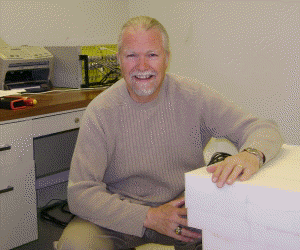
Denis Beller, research professor, University of Nevada, Las Vegas
What do you say to a man who hung out with Paul Newman's racing car team, facilitated meetings of minds about nuclear energy among top corporate and political leaders and, while he was at it, got published in Foreign Affairs magazine?
It is easy to say "howdy" to Denis Beller, who will receive an award from ANS at the 2010 Winter Meeting for his effective communications activities on behalf of nuclear energy.
Beller will be honored with the Landis Public Communication & Education Award on November 9 at the annual awards luncheon during the ANS Winter Meeting, being held at the Riviera Hotel in Las Vegas, Nev., on November 7-11, 2010.
The award citation reads, "In recognition of outstanding personal effort in furthering public understanding of the peaceful applications of nuclear science and technology."
Beller has spent many years as a nuclear engineering research professor at the University of Nevada, Las Vegas. In addition to teaching and research, he worked diligently as a member of the ANS Public Information Committee and chaired it during his tenure. (Note to readers: Beller's outstanding communication work was profiled last year in ANS News; available online to members (see Pg 5 at this link).
A paradigm for public communication
Beller's view on how to get information to the public is summed up very quickly.
The concept of "educating the public" is an "insult," Beller said.
"Many in our field don't understand that we need to communicate with people. We need to talk to the public and answer their fears," he said.
Adventures in movie land
In 2000, Beller and Richard Rhodes co-authored an article on the need for nuclear energy that was published in the prestigious journal Foreign Affairs. In the article, which was widely circulated to members of Congress, the co-authors wrote:
"The world needs more energy, and there is one clean, efficient, and safe way to get it: nuclear power. As the global appetite for electricity grows, atomic power-which scarcely pollutes, generates relatively little solid waste, and is far more efficient than the alternatives-should be embraced. A worldwide effort to develop and share nuclear technology is in all our interests."
Beller had some real adventures in his role as a communicator for nuclear energy. In the late 1980s, Paul Newman-yes, that Paul Newman (1925-2008)-had been cast to appear in a new movie, Fat Man & Little Boy, about the making of the atomic bomb. (YouTube link to original movie trailer)
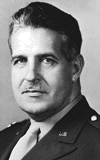
General Leslie Groves (Photo: LANL archives)
In preparing for his role as Gen Leslie R. Groves (1896-1970), who led the Manhattan Project, Newman turned to Rhodes, the author of the book "The Making of the Atomic Bomb" (Amazon link 1986) for technical advice. After the publication of "The Need for Nuclear Power" in Foreign Affairs, Rhodes put Newman in contact with Beller to answer questions about the disposition of "nuclear waste." The story of how the three men met and worked together is well-told in this 2008 story in the National Review by William Tucker and Stephanie Guttman.
New York dinner debates
To answer Newman's questions about nuclear energy, Beller suggested to Newman that he pay a visit to UNLV, where a large research project had begun on recycling used nuclear fuel, and to the Yucca Mountain Project. Afterward, Newman said that he would like to do something to tell the story, but that he didn't want to make a media splash. He preferred a low-key approach.
In 2002, Newman organized the first of a series of dinner-debates on nuclear energy at his apartment in New York. Beller was there to facilitate the off-the-record discussions between key industry and media leaders.
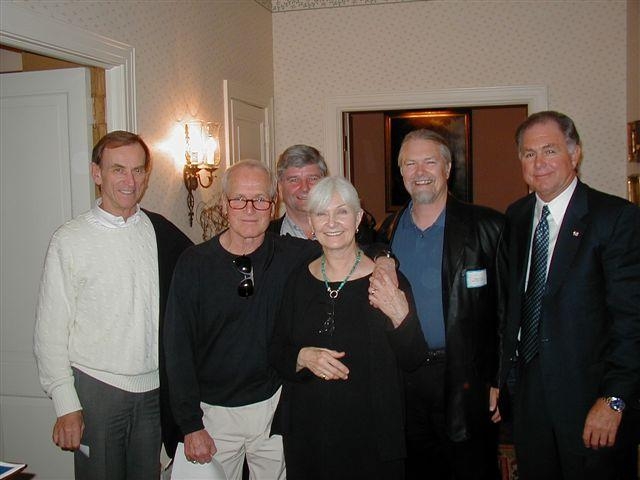
Left to right, front: Linden Blue, General Atomics; Paul Newman; Joanne Woodward; Denis Beller, UNLV; and Joe Colvin, ANS. Back: Dan Keuter, Entergy.
Beller later introduced Newman to two other advocates, Susan Eisenhower, whose Eisenhower Institute has promoted nuclear power as part of a legacy of President Dwight Eisenhower's Atoms for Peace program, and Al Trivelpiece, former director of the Oak Ridge National Laboratory.
The Eisenhower Institute arranged two more meetings in Newman's apartment during 2005-2006 with a larger group of people from industry and government.
Beller says that the one-on-one conversations changed minds and influenced the views of thought and opinion leaders in business and government.
Racing car days
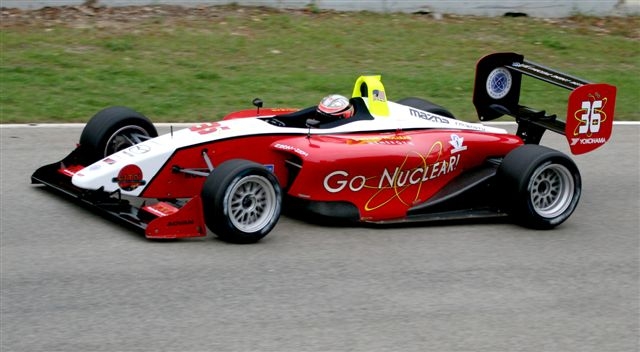
ANS logo on real spoiler of Paul Newman's race car. (Photo: Judy Beller)
In 2006-2007, Newman agreed to place the ANS logo, along with 27 other nuclear industry decals, on his racing car as it traveled the high performance racing circuit in the U.S. The car was exhibited throughout the country and known as the IndyCar.
The race car attracted lots of attention, which gave Beller the opportunity to talk to people about nuclear energy. Beller says that these events allowed people to have one-on-one conversations with nuclear engineers.
"I can see the expression on someone's face change when we answer their questions. This is how we change the paradigm of nuclear communication. It is not knowledge we have to address. It is belief, " Beller said.
What's changed and what's new?
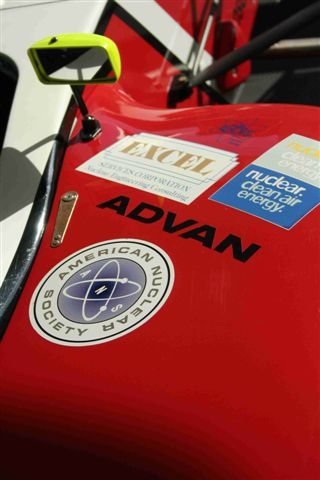
Closeup ANS logo on Newman's race car. (Photo: Judy Beller)
Asked what's changed since he worked with Newman nearly a decade ago, Beller says that he's pleased to see more use of online media to spread the message about nuclear energy.
"Young people are very oriented to the new media," he said.
What's needed in the future?
Beller says that the continuing engagement of ANS members with the Public Information Committee is very important.
"It is part of the changing paradigm of nuclear communications. Scientists and engineers in the nuclear industry will gain the respect of the public if they just go out and talk to people."
A thank you note from Denis Beller
My wife Judy supported me in many ways, including traveling to exhibits with an IndyCar in tow. She helped me push it into places like the Mall of America, speaking with ANS members and other professionals.
Judy convinced Ambassador Kennedy to support ANS IndyCar Outreach. She was the source of photography at many venues. She set up tables with ANS materials, worked with students, spoke with the public, and so much more.
Another great supporter was Sharon Kerrick at ANS who worked with us for much more than a decade. Others I'd like to thank include Don Hoffman of Excel Services Corporation, several people from the Nuclear Energy Institute, and others too numerous to name here.
______________
Dan Yurman publishes Idaho Samizdat, a blog about nuclear energy. He is a contributing reporter for Fuel Cycle Week and a frequent contributor to the ANS Nuclear Cafe.

